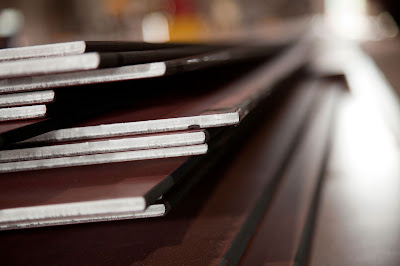 |
| Metal produced at Nucor |
“We are a cyclical business... Basically when you are at the peak of the cycle—times are good, interest rates are low, people are building—our margins increase. When we go to the trough, of course, the margins are squeezed. But over the last 25 years Nucor has never had a losing quarter. Not only a losing quarter, we have never had a losing month or a losing week.”
John Correnti, Former Nucor CEO[i]
In 2019, Nucor is the largest steel company in the United States with a market capitalization of nearly $18 billion.[ii] When founded in 1940, it wasn’t even a steel producing company. Production only began at the end of the 1960s, with the arrival of Kenneth Iversen, whose insights (see below) transformed the firm into the behemoth it is today.
Nucor was the first US steelmaker to see the potential of mini-mill technology
Mini-mill technology was key to allowing small operations like that of Nucor to overtake industrial giants like US Steel. This involved converting scrap steel into finished steel using small-scale electric furnaces. Although this form of steel production was already popular in Japan and Europe, Nucor was the first to bring it to the United States. [iii]
In 1969, Nucor opened its first mini-mill in Darlington, South Carolina. At just 5 to 10% of the typical capital cost involved, it gave mini-mill operators like Nucor a significant cost advantage over integrated steel producers. In 1966, US Steel controlled over half of the US steel market; twenty years later, this figure had fallen to less than 20%.[iv]
Nucor brought lean management to the steel industry
In the 1960s, when management structures were still largely hierarchal, Nucor set about bringing a lean management structure to the steel industry. Only four levels of management separated CEO Kenneth Iversen from the hourly employees – a decentralized system that also allowed these managers to make decisions more efficiently.[v]
At the company’s headquarters, there were just 22 employees – 8 managers and 14 support workers. The company lists no corporate cars, jets or even personal parking spaces.[vi] This culture of lean management also helped the company to avoid the pitfalls of unionization which dogged the US steel industry for decades.
Nucor fostered a culture of innovation which was atypical in the steel industry
The mini-mill technology which Nucor advanced in the United States was just the first of a number of industry innovations, which also included significantly more efficient production of fastener steel, and later, modifying a German caster and using it for to make sheet metal in a completely new and unconventional method.[vii]
As one Nucor plant manager once said, paraphrasing then CEO Kenneth Iversen: “Success is making the correct decision 60 percent of the time. What’s important isn’t the mistakes that are made, says Iverson, but the ability to learn from the 20 percent that are truly mistakes and the 20 percent that are suboptimal decisions.”[viii]
[i] Franklin,R (1996). “An Interview with John D. Correnti, President and CEO, Nucor Corporation,” The Wall Street Corporate Reporter, September 9-15, 1996, pp. 19-20.
[ii] Yahoo! Finance.
[iii][iii] http://mba.tuck.dartmouth.edu/pages/faculty/chris.trimble/osi/downloads/20015_Nucor_A.pdf
[iv] http://www.briankboyd.com/DocFiles/Nucor_Case_HHI4e.pdf
[v] Shetty, K (1991). “The quest for competitiveness: Lessons from America’s productivity and quality leaders.” Praeger Publishing.
[vi] https://www.managerwise.com/nucor-steel-recipe-of-productivity/
[vii] http://www.briankboyd.com/Nucor/nucinnov.htm
[viii] Berry, B. (1993) “Hot band at 0.66 manhours per ton.” Iron Age New Steel. 1(1): 20-26.
No comments:
Post a Comment